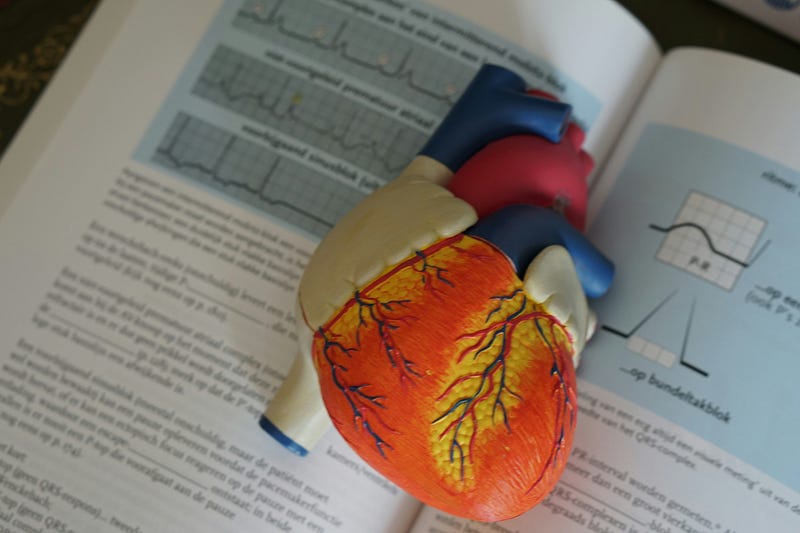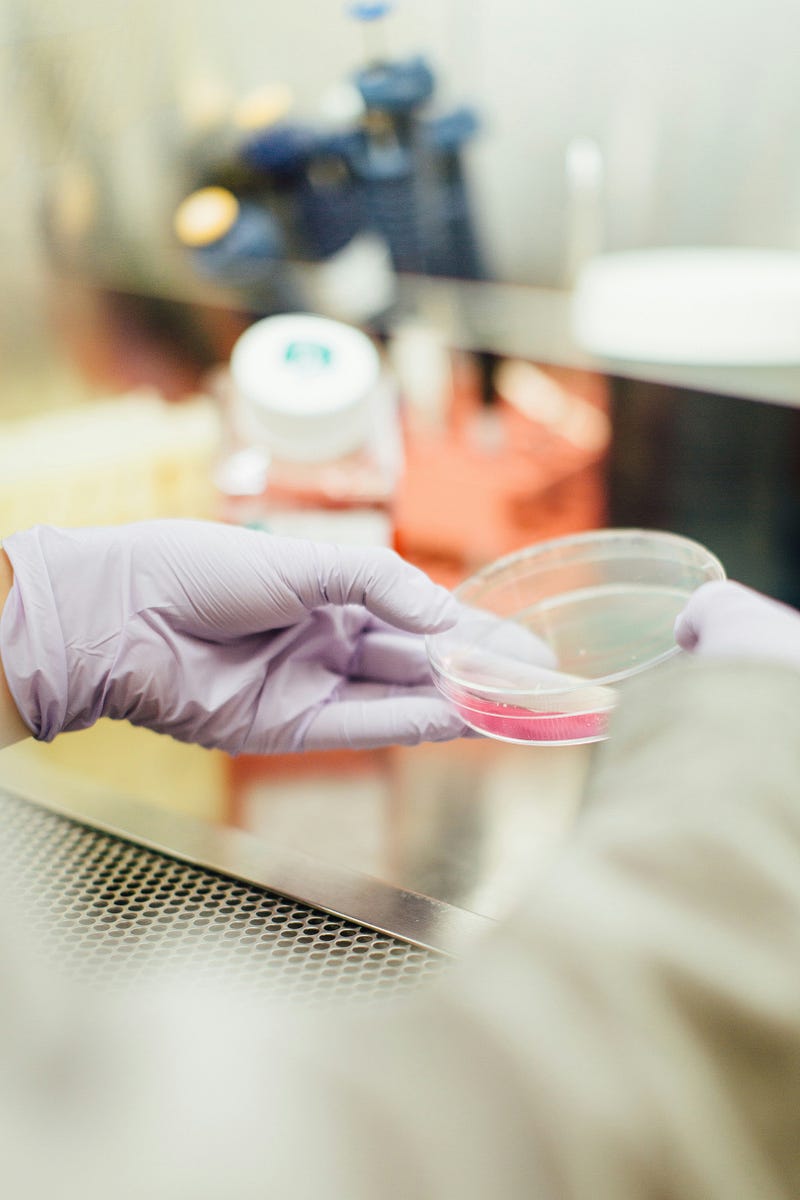Innovative Approaches to Cardiac Regeneration and Repair
Written on
Chapter 1: Understanding Heart Regeneration
Cardiovascular disease is a significant global health issue, responsible for millions of fatalities each year.

Photo by Robina Weermeijer on Unsplash
When the heart sustains damage—whether from a heart attack or chronic issues like heart failure—its self-repair capabilities are notably limited. Conventional medical treatments primarily focus on alleviating symptoms and preventing further injury, but they fall short of reversing existing damage. However, recent breakthroughs in medical research are investigating the possibility of heart regeneration, instilling hope for the repair and revitalization of damaged heart tissue.
The Challenge of Cardiac Recovery
Unlike some other organs, the heart exhibits minimal regenerative abilities. For example, post-heart attack, the affected myocardium is often replaced with scar tissue, which is unable to contract or transmit electrical signals effectively like healthy tissue. This scarring can hinder heart function and may lead to chronic heart failure. The heart's limited regenerative capacity has prompted researchers to explore various methods aimed at facilitating heart repair and regeneration.
Section 1.1: Innovative Strategies for Heart Repair
Among the most promising strategies for heart regeneration is stem cell therapy. Stem cells can differentiate into various cell types, including cardiomyocytes (heart muscle cells). Researchers are experimenting with different stem cell types to regenerate damaged cardiac tissue. While embryonic stem cells (ESCs) can develop into any cell type, they pose ethical and immunological dilemmas.

Photo by Drew Hays on Unsplash
Induced pluripotent stem cells (iPSCs), which are adult cells reprogrammed to an embryonic-like state, can also evolve into heart cells. Additionally, cardiac progenitor cells located in the heart have the potential to differentiate into cardiomyocytes or other cardiac cell types. Initial clinical trials employing stem cell therapy have demonstrated promise in enhancing heart function and reducing scar tissue in individuals with heart disease.
Subsection 1.1.1: Gene Therapy and Tissue Engineering
Gene therapy aims to introduce specific genes into the heart to stimulate regeneration and repair. Techniques include using genes that encode growth factors like VEGF (vascular endothelial growth factor), which promotes the creation of new blood vessels (angiogenesis) in the heart, as well as reprogramming fibroblast cells into functional cardiomyocytes. Ongoing clinical trials are assessing gene therapy's effectiveness, with some studies revealing improved heart function and reduced scar tissue.
Tissue engineering integrates cells, biomaterials, and bioengineering methods to create functional cardiac tissue. Biodegradable scaffolds infused with stem cells or cardiomyocytes can be implanted into the heart to support tissue regeneration. Advances in 3D bioprinting technology facilitate the creation of intricate tissue structures that emulate the heart's architecture. Nevertheless, ensuring proper integration with existing heart tissue and adequate vascularization remains a key challenge.
Certain pharmacological agents can also activate the heart's inherent repair mechanisms. For instance, neuregulin-1, a growth factor, has been shown to encourage the proliferation of cardiomyocytes. Additionally, while primarily used to manage heart failure, beta-blockers and ACE inhibitors may have regenerative properties.
Importance of Cardiac Regeneration
Heart regeneration therapies could significantly enhance outcomes for individuals with heart disease by restoring cardiac function and reducing reliance on heart transplants. By regenerating damaged heart tissue, these therapies can improve patients' quality of life, enabling them to engage in daily activities and alleviating symptoms of heart failure.
Implementing effective heart regeneration treatments could also lower the long-term healthcare costs linked with chronic heart failure and other heart conditions. Given the prevalence of heart disease as a leading cause of death globally, regenerative therapies present a promising solution to a critical public health challenge.
Current Research and Developments
Recent studies and clinical trials have yielded encouraging findings in heart regeneration. Trials utilizing mesenchymal stem cells (MSCs) and iPSCs have shown potential for reducing scar tissue and enhancing heart function in patients following heart attacks. Research focused on delivering genes that stimulate cardiomyocyte proliferation and angiogenesis shows promise in animal models and early human trials. Innovations in 3D bioprinting and scaffold design are paving the way for more effective tissue engineering strategies for cardiac repair.
Challenges and Future Directions
Despite these advances, several challenges persist. Ensuring the safety and long-term effectiveness of regenerative treatments is essential, as there are risks of immune rejection, tumor development, and arrhythmias. Developing scalable and cost-efficient methods for producing and administering regenerative therapies is vital for broader clinical implementation. Furthermore, integrating regenerative therapies with existing heart disease treatments to optimize patient outcomes remains a crucial consideration.
Conclusion
Heart regeneration stands at the forefront of treating heart disease, offering the potential to repair and restore damaged cardiac tissue. Through advancements in stem cell therapy, gene therapy, tissue engineering, and pharmacological approaches, researchers are making significant progress toward actualizing heart regeneration as a clinical option. While challenges remain, the potential of these therapies could reshape the landscape of cardiac care, enhancing outcomes and quality of life for countless patients worldwide.
The first video titled "Imaging the heart: the new frontier" discusses recent advancements in imaging technology that enhance our understanding of heart conditions. This exploration is pivotal for improving diagnostic capabilities and tailoring effective treatments.
The second video, "1/26/18: Cardiac Regeneration: The Future?" delves into the exciting potential of cardiac regeneration therapies and their implications for future heart disease treatments.
Thank you for taking the time to read my article. I genuinely hope you found it informative. Please feel free to share your thoughts in the comments and like this article before you go. Don’t forget to follow for more engaging content. See you in the next article!